The “Bumi Boys” seen yesterday, along the Bumi Hills Safari lodge shoreline.
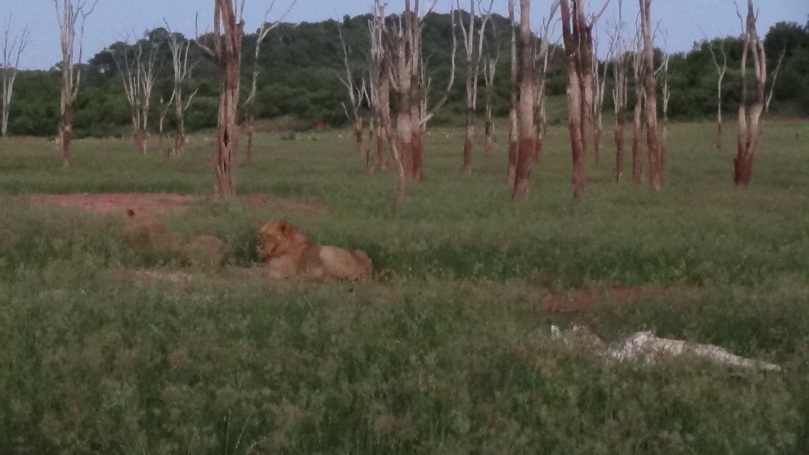
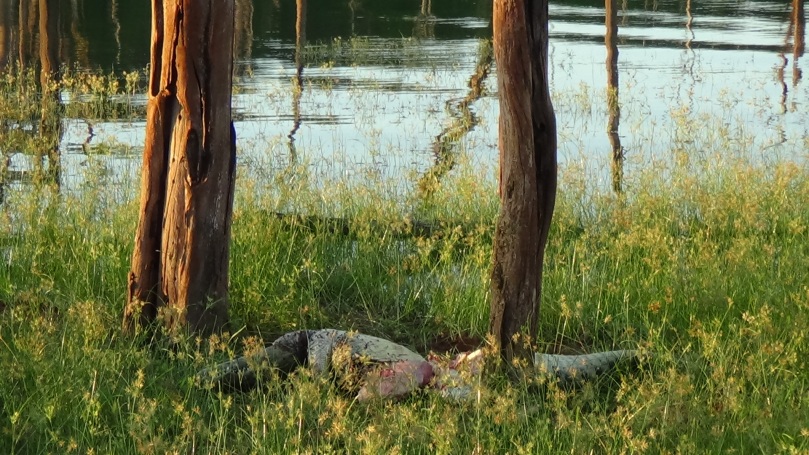
The “Bumi Boys” seen yesterday, along the Bumi Hills Safari lodge shoreline.


Cecil’s pride originally consisted of 3 Mature females and 8 cubs born to the pride in February 2015 sired by both Cecil and Jericho, however there currently remain 6 cubs and two mature Lioness. It appears the third Lioness is no longer with the pride.
She has disappeared the circumstances unclear.
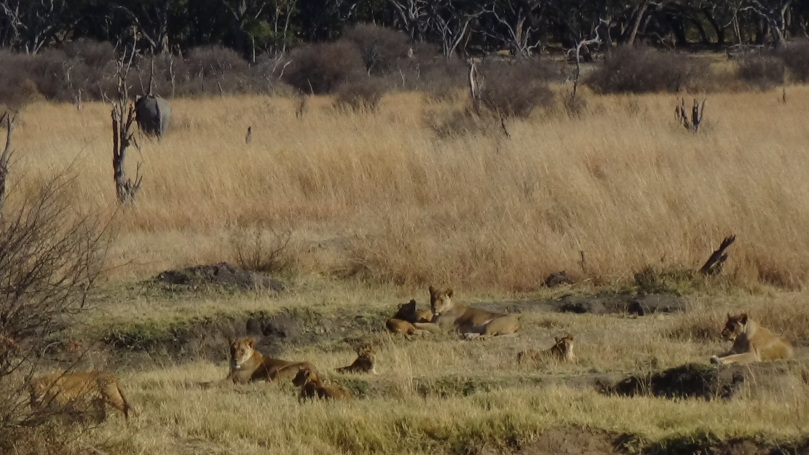
They are situated between the area of Kennedy 2 and Mbiza within the eastern boundary of Hwange National Park. Although they are constantly on the move they still infrequently present regular photographic opportunity.
Despite the missing third Lioness, all six cubs are in fantastic condition.
Jericho, unable to hold the territory moved north abandoning the pride and has settled around Kennedy 1 and the area of The Hide Safari Camp and is seen on a regular basis.
He has within the territory he currently holds three Lioness, a collared Lioness named Cathy and her two nieces.
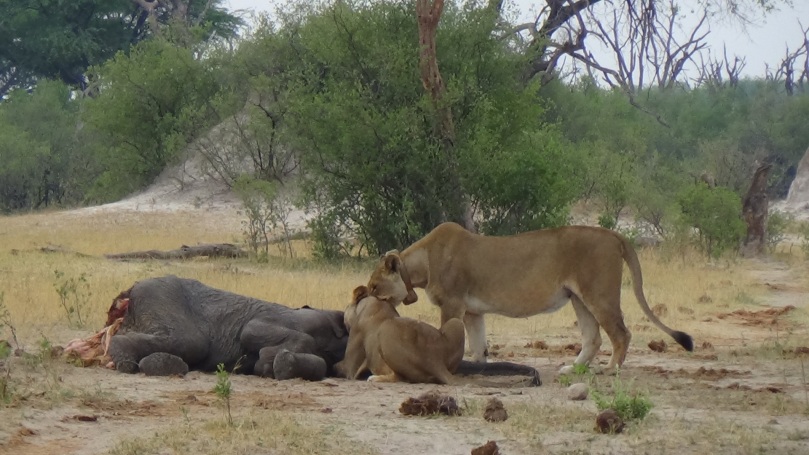
Here Cathy feeding on a young elephant they had just killed. This is a typical behavior of Lions in the height of the dry season In Hwange.
Cecil the lion became world famous when he was tragically Killed on the border of Hwange National Park in Zimbabwe on the 1st of July 2015. Before his untimely demise he lived a full life in the world renowned game park and I would like to take this opportunity to share some of his history and provide […]
The Issue Is….
In Southern Africa there exists two species of rhino the Black (Diceros Bicornis) and the White (Ceratotherium Simum) Both species currently face extinction due to demand in many Asian countries for the Rhino’s Horn.
The horn of both species up until now for thousands of years people have believed it to possess properties making it much sought after as an aphrodysiac.
The current Idea…
For many years Zimbabwe and other Southern African countries have conducted annual dehorning exercise’s.
The current Dehorning exercise is typically carried out by a qualified veterinarian who darts the rhino with a powerful anaesthetic which puts the Rhino to sleep. The team then quickly move in and will check the Rhino’s vital signs and will cut the horns off, thereafter the vet will administer a drug to reverse the anaesthesia. The Rhino gets up and after a few puffs and pants runs off into the bush.
To cut the horn off is to remove the incentive from the poaching of the rhino, making it less attractive for the poacher. Over the years it has been established that the Rhino’s horn after dehorning grows five Centimetres per year and can be harvested without damage to the health of the Rhino…
In Southern African countries the rhino horn Stockpile in the Parks vaults increases year by year…
There is currently a ban in the trade in rhino horn imposed by CITES an International body (Convention for the international Trade in Endangered Species) and yet year by year the demand for horn in Asia increases 13 killed in South Africa in 2007 and by the end of 2014 1215 Rhino were killed for their horn.
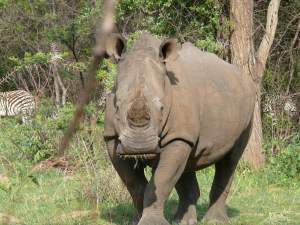
The question is… Is It Working???
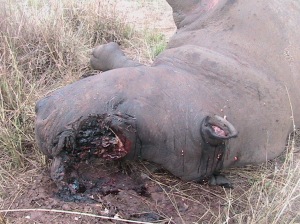
The Way Forward.…
Does it not make sense to legalize the trade in the horn giving the farmer a financial incentive to not only look after the rhino he has, but to also be provided the incentive to increase his numbers.
An ethical legal trade in rhino horn should be controlled by a Central Selling Organisation.This organization would broker sales to partners in consumer countries. All horn would have to be registered through a database and marked and quotas proportionate to the ownership of rhinos would be determined.Only registered stakeholders (farmers, landowners etc) would receive payment for horn.
Many people comment on the game parks potentially having less Rhino, the trouble is most have already disappeared from the wild.
The reality is…
The Rhino’s horn is made up of Keratin exactly the same stuff making up our hair and finger nails and the claimed pharmacological properties of the horn as an aphrodysiac yet remains to be proven.
Despite the great variety in appearance, it was recognized by early comparative anatomists that structures as diverse as hairs, feathers and hooves and consist of a similar substance, which was called ‘horn’ or ‘keratin’.
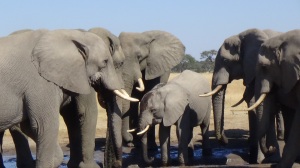
It is whilst watching elephant within Hwange National Park, one of Southern Africa’s biggest game parks that a certain dynamic is realised to exist between the Old Bull elephant and their young apprentices, friendships which will often span a lifetime.
The Elephant herd consisting of the matriarch, her sisters and daughters, as well as young males under the age of 14.
The young Bull from age 12 comes into must which is a condition of breeding. Both the male and female need to be in season for copulation to occur.
To avoid the young elephant bull from breeding with sisters and aunties he is expelled from the herd from between age’s 14 and 20 and in this condition has a natural inclination to cover tremendous distances moving him away from potential family members.
Elephant bulls when in breeding enter a state of elevated testosterone levels known as musth. During musth the elephant bull dribbles strong smelling urine profusely, discoloring the inside of his legs and penis and secretes from the temporal glands run down the sides of his head. The elephant Bull in Musth also becomes aggressive due to high blood testosterone and will travel long distances taking them away from areas where they may be related to cows, along the way they emit an infrasonic musth call to attract oestrus cows and will challenge other bulls they may encounter.
In Hwange, In the late dry season when the young bulls are dehydrated, depraved of nutrition and alone will often be preyed upon by the prides of Lion as the young elephant bulls no longer have the protection of the herd. It’s at this time that the young bull elephant needs to join up and become Askari to an older bull who will teach him the natural migratory routes, certain plants to eat at certain times of the year but most importantly the breeding protocol’s and manners.
Although they can breed at a young age the Elephant can only start breeding when he is big bodied enough to be able to challenge the big bulls. Typically this takes place from age 35.
The discipline instilled from the influence of the older bulls is a vital part of maintaining order within the structures of society and definitely something we too should learn from.
It is said “When southern africa’s Cape Buffalo clash horns, it is the equivalent to a car hitting a brick wall at fifty kilometres an hour”.
At the age of ten the Cape Buffalo Bull has an increase in his testosterone which peaks over 300% above normal blood testosterone levels. This enables him to fight for rank and thus gain breeding right’s.
The Buffalo bull within the structure of the herd needs to fight to establish rank within the herd. When on the move the Buffalo Bulls position themselves depending on rank. The Herd Bulls of high rank “Breeding Bulls” will situate at the front and to the side, whilst the subordinate bulls situate at the rear.
There is clear reason for this which is primarily to access the best grazing and thus maintain condition. This is especially relevant during the dry season when there is a drastic shortage of good grazing and browse of good nutritional value.
The high ranking breeding bulls are mainly the older Buffalo, as they will be big bodied enough to win fights. these are typically between the age’s of 10-13 years of age. By walking at the front they get good nutrition and so will maintain a better physical condition.
When the buffalo cow comes into season, she will play “hard to get” so as to ensure that only the Bulls with the best gene’s procreate with her.
While on their african safari, the guests with me never thought they’d get to see something so unique, although neither did I.
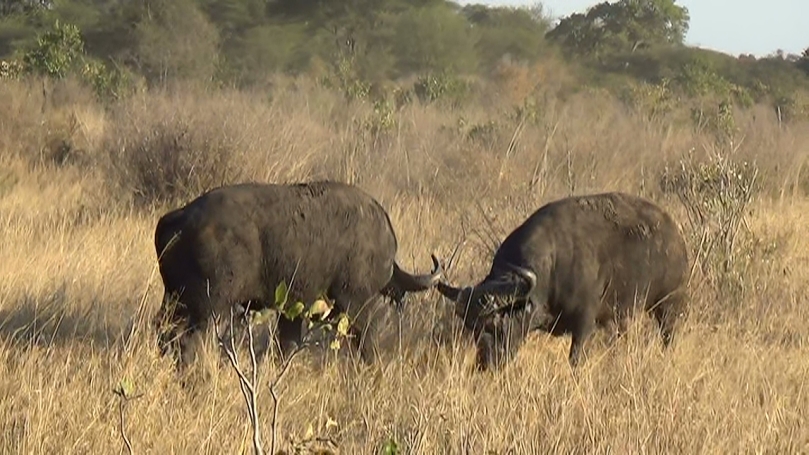
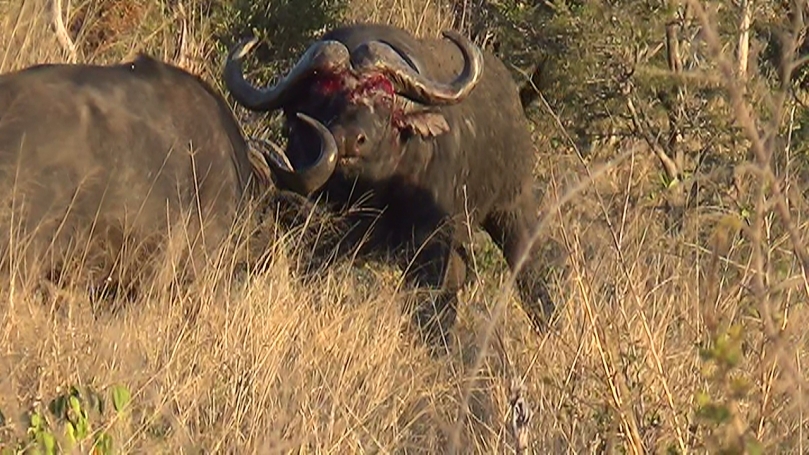
From the age of 13, the bulls tire physically. Known as “Dagga Boys” they suffer from mite’s, ticks and other infestations so will tend to bathe in mud for relief.
Dagga is an Ndebele name for mud.
They typically leave the herd and thus will live singly or within small batchelor groups. The young herd bulls will often leave the breeding herds from age 8 and will join the Dagga boys to regain physical stength and condition to be able to once again fight for rank as the day to day life continues of a Buffalo Bull in Hwange National Park, Zimbabwe.